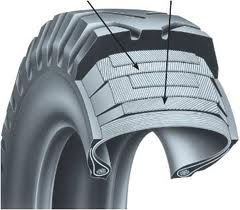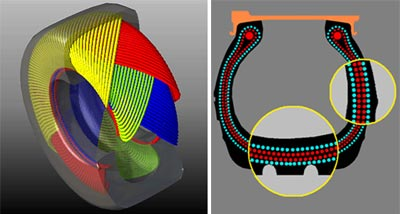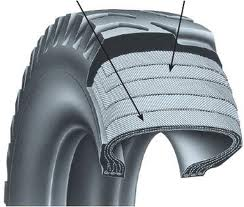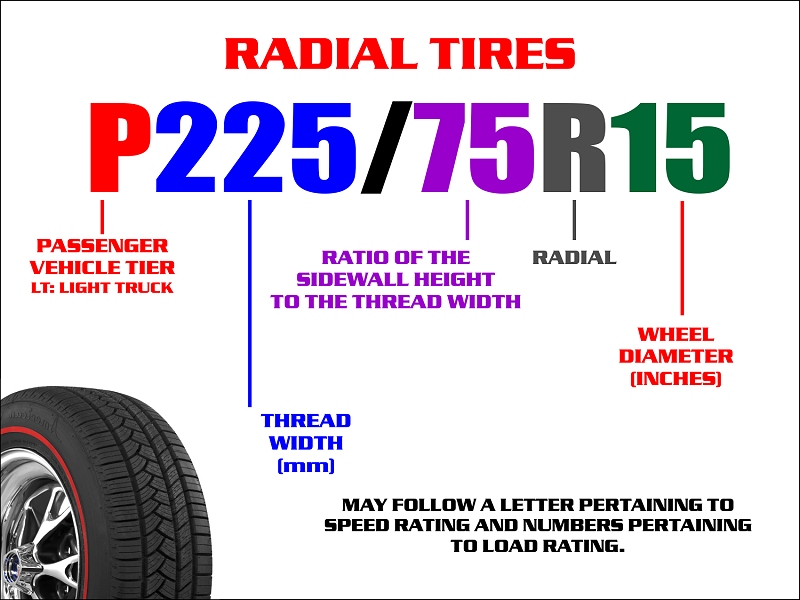| ORDERING
1) Do you stock the tires?
Due to the fact that there are hundreds of models and sizes of tires, and in order to keep our prices low for you, we order them when you place an order. We usually receive them within a week and ship them the next business day after reception.
2) What amount of time should I expect to receive the tires?
As we get them within (or sometimes a bit less) a business week, and as we ship them the next business day after we receive them, whatever delivery time between Hawkesbury, ON and your place is that amount of time you should expect. As distance and your proximity to bigger cities are factors, within 2 weeks is the expected time.
3) Which delivery service do you use?
Our import broker Link + ships the tires and uses
the best courrier service amongst a few possibility to ship them to
your place.
4) Are the tires on your website available all the time?
Usually, but as vintage tires are produced in smaller runs, back orders are sometimes an issue, especially for brands imported from Europe, as the supplier may receive its orders only a few times a year.
5) Do you ship outside of Canada?
We ship to Canada only. We can send tires directly between our supplier and French-speaking European countries. American and other international orders are forwarded directly to Universal Vintage Tire Co.
6) What do I do if my tires become defective?
Within a reasonable amount of time, if you’ve bought your tires through us, just send us pictures (or video) and an explanation and we’ll process that with our supplier. Unless the tires show signs of abuse or are punctured, we usually can help you out when the very occasional times happen.
7) Has Sylmar Auto Ville been in business for many years?
The Villeneuve family has been in business since 1994, and in the classic vehicle business since 2002. Sylmar Auto Ville has been an authorized agent for Universal Vintage Tire Co. for Canada since 2003. We have become a top retailer for Universal Vintage Tire Co. outside the USA.
8) Do you sell all-season tires and winter tires for late-model vehicles?
Sorry, we don’t. But we’re certain that your local tire shops can help you with those.
PRODUCTS
1) What’s the difference between radial and bias tires?
Here are good definitions based on a Dutch website:
Radial Tires
Radial tires were developed in 1946 by Michelin. There was a need for more flexible tires, which were able to adsorb shocks generated by road surfaces. These tires are also stronger, which means machines can be operated at higher capacities.
In radial tires, steel cord plies are placed on the heel of the tire, and a belt is placed across the carcass. Because cord plies are placed directly on top of each other, the side walls of radial tires remain very flexible. The images
on the right clearly shows the various layers featured in a radial tire. The bottom layer features steel cord plies and gives the tire its most important properties.
Advantages of radial tires:
•  good steering and better road contact; good steering and better road contact;
• improved driving comfort thanks to a flexible side wall;
• little heat generated in the tire at high speeds;
• higher resistance against tread-related damage.
Disadvantages of radial tires:
• the tire generates more noise due to its harder tread;
• the soft side walls are susceptible to damage when, for example, vehicles collide with road curbs;
• minor bumps on road surfaces are dealt less effectively because radial tires feature a steel belt.
Bias Tires
 Bias tires have been used instead of full rubber tires since 1898. They were a standard feature in the car industry before radial tires were introduced. Bias tires have been used instead of full rubber tires since 1898. They were a standard feature in the car industry before radial tires were introduced.
Bias tires consist of carcass layers made from nylon cord. They are placed diagonally across each other in the tread and the side walls, at an angle of 55 degrees. Bias tires are still used, for example, for light duty cargo and utility trailers. The image shows how the various layers are placed diagonally on top of each other.
Advantages of bias tires:
• improved vehicle stability;
• self-cleaning capacity on muddy surfaces;
• higher resistance against side wall damage;
• larger whitewall width than radial equivalent.
Disadvantages of bias tires:
• high road resistance, thus rolling resistance, which causes the tire to heat up quickly;
• reduced comfort due to the tire's rigidity;
• higher tendency to be affected by cracks in the road while driving.
Source: https://www.heuver.com/news/item/489/what-is-the-difference-between-radial-tyres-and-diagonal-tyres
2) How do I decode the size of a radial tire?
See the diagram below:

3) How do I decode the size of a bias tire?
Other than the size of the wheel, in inches, there isn’t a formula like the radial tires.
4) I want to change from bias to radial tires. How can I know which size I now need?
We have conversion charts for that. Just tell us your present bias-ply size.
5) Are those old tires that have been on a shelf for decades or newly-produced tires?
They are recently-produced tires. We certainly don’t recommend that you install unused decade-old tires!
6) I’ve just received my whitewall tires (or raised white letter tires) and the white is covered with blue… why?
That blue substance is meant to protect the white until you are ready to install them. It washes off easily.
7) Can I put tubes in tubeless tires?
Rule of thumb, we don’t recommend it. Some customers with spoke wheels have used tubes to correct air pressure loss; if so, also use flaps to protect your tube.
8) How come my local Firestone (or any other brand) dealer can’t get Firestone vintage tires?
Vintage tires are reproduced under license (ex: Firestone allows a third party to produce them for a licensing fee) in smaller batches. Consequently, while it’s written Firestone on the side wall, Firestone most probably doesn’t produce them directly anymore. But the original moulds (or moulds re-casted from the original drawings) and original processes are used to produce these vintage tires. As they are produced, supplied and retailed through another channel, they aren’t usually available to your local dealer from its usual supply source.
9) I can’t balance the tires, could they be defective?
While it’s not impossible, it’s improbable. As a matter of fact, 99% of the time, the wheel is the culprit. You can put the wheel on the suspect list especially if you have 3 of the 4 tires and wheels which balance well while the 4th combo doesn’t.
10) Should I put air or nitro in my tires?
Our supplier recommends air. Nitro has been a good upsale for dealerships in the last few years but many scientists question the fact that it will make any difference from regular air, unless your vehicle is put under conditions you wouldn’t put it in.
11) Can I send my old tires to the local recycling drop-off?
Check with your local recycling program but most probably, yes! We do recommend you to do this as they can be recycled into other use instead of rotting at the dump…!
12) Can I install 15” tires on 14” wheels?
No. While only very occasionally, yes, we have been asked that question. Even the best duct tape in the world won’t be enough to make it work…!
|
